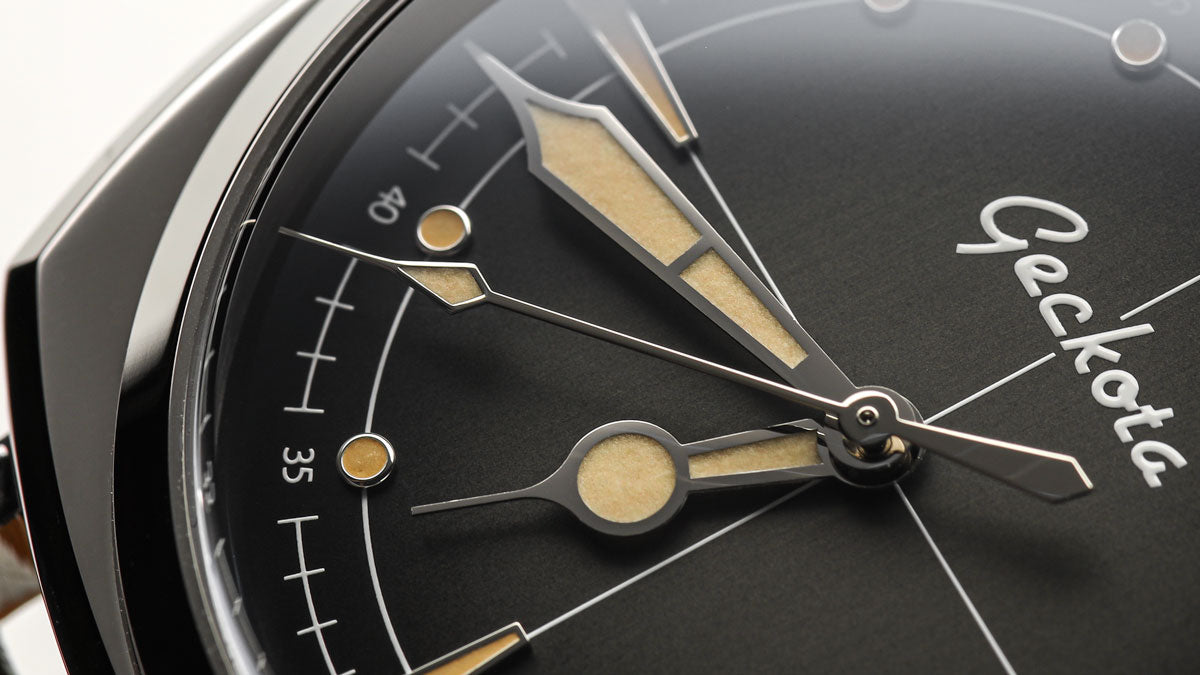WORLDWIDE SHIPPING ALL TAXES PRE-PAID
WORLDWIDE SHIPPING ALL TAXES PRE-PAID
WORLDWIDE SHIPPING ALL TAXES PRE-PAID


Categories
February 05, 2024 3 min read
There are some watches that transcend the boundaries of mere “fashion” timepieces, and instead enter the realm of true timekeeping artistry and engineering. One of them is the perpetual calendar watch. But what is the perpetual calendar watch? And how does it differ to the similarly named annual calendar watch? Join us as we through the history, functionality, and the awe-inspiring complexity of these extraordinary timekeepers.
 Forzo Enduratimer - Credit Geckota
Forzo Enduratimer - Credit Geckota
Considered one of the most complex complications in the watchmaking industry, the perpetual calendar is often referred to as the horological “crown jewel.” It has the remarkable ability to automatically track the date, day, week and month, all while accounting for the variable lengths of months and leap years.
Unlike standard time-and-date watches which require you to manually skip over the 31st on months without such a date, perpetual calendar watches do this automatically. Annual calendar watches differ from the perpetual calendar complication in that, while also displaying the day, month and date and accounting for 30-day and 31-day months, they require manual adjustment at the end of February.
Many perpetual calendar watches also indicate the moonphase, which like the rest of the functions on the dial is automatically accounted for. Watches of this calibre require as many of 200 additional parts and are incredibly difficult to put together with only a handful of watchmakers capable of engineering them. When you take into account their complexity and ability to stay accurate until the year 2100, their premium price points seem well reflected.
 Forzo Enduratimer - Credit Geckota
Forzo Enduratimer - Credit Geckota
Interestingly, the invention of the perpetual calendar precedes that of the annual calendar. The complication dates back to the mid-1700’s. English watchmaker Thomas Mudge is credited for creating the first known perpetual calendar complication in 1762, understandably making a name for himself in the process. The complication was fitted into a gold pocket watch which can still be seen at The British Museum in London today.
Now we have to fast forward an entire century before the perpetual calendar complication appears again. This time, Patek Phillip utilised a perpetual calendar movement into pocket watch in 1864 before later obtaining a patent for the mechanism in 1889. Ten years later, they also produced the world’s first compact perpetual calendar movement and housed it inside a women’s pendant watch. It’s an interesting move, placing such an extraordinary complication around female necks, but possibly unsurprisingly, the pendant went unsold.
It would be another several decades before the first perpetual calendar wristwatch would make its debut. In 1925, an American collector of Patek Phillipe watches commissioned the first wristwatch featuring the complication. Patek used the same calibre they created in 1898 for the women’s pendant watch, a movement designated No. 97975, and produced it within an elegant gold wristwatch in 1925. Breguet weren’t too far behind, launching their own perpetual calendar watch in 1929 and Jaeger-LaCoultre followed shortly after with their own rendition in 1937.
 Forzo Enduratimer - Credit Geckota
Forzo Enduratimer - Credit Geckota
Perpetual calendar watches are inherently complex, comprising of numerous tiny mechanical components including a date wheel, date change lever, a day wheel with day-of-the-week lever, month wheels, moonphase apertures and around 200 more components. There are many different types of perpetual calendar watches on the market, with each offering a movement different from the next, but essentially, they all keep track of the time and date until the year 2100. Why the year 2100? Because during this year, a leap year should occur, but we will be skipping it in order to have real time and solar time coincide correctly. It’s unlikely though that if you were to buy a perpetual calendar watch right now, you’re not going to be alive to have to manually correct it in almost eighty years’ time.
Perpetual calendar watches are a true testament to human innovation. It’s easy to see why so many collectors, especially those with an obsession with horological engineering, are drawn to these masterpieces. They require minimal manual adjustment, effortless presentation of all the calendar complication you could ever need and a rare connection to some of the richest histories in watchmaking.
So there you have it, a comprehensive guide to the perpetual calendar watch. Do you own one? Or is there a particular model on your bucket list? Let us know in the comments below.

February 08, 2024 2 min read
Read More
About the Author: Charlotte Harris
About the Author: Charlotte Harris
Writing and watches are two of my biggest passions in life so being able to unite them on a daily basis is a wonderful thing. I hope through my writing that I can bring a fresh, feminine perspective on the watch space and encourage more men and women to get excited about all that’s happening.
More Articles by Charlotte Harris